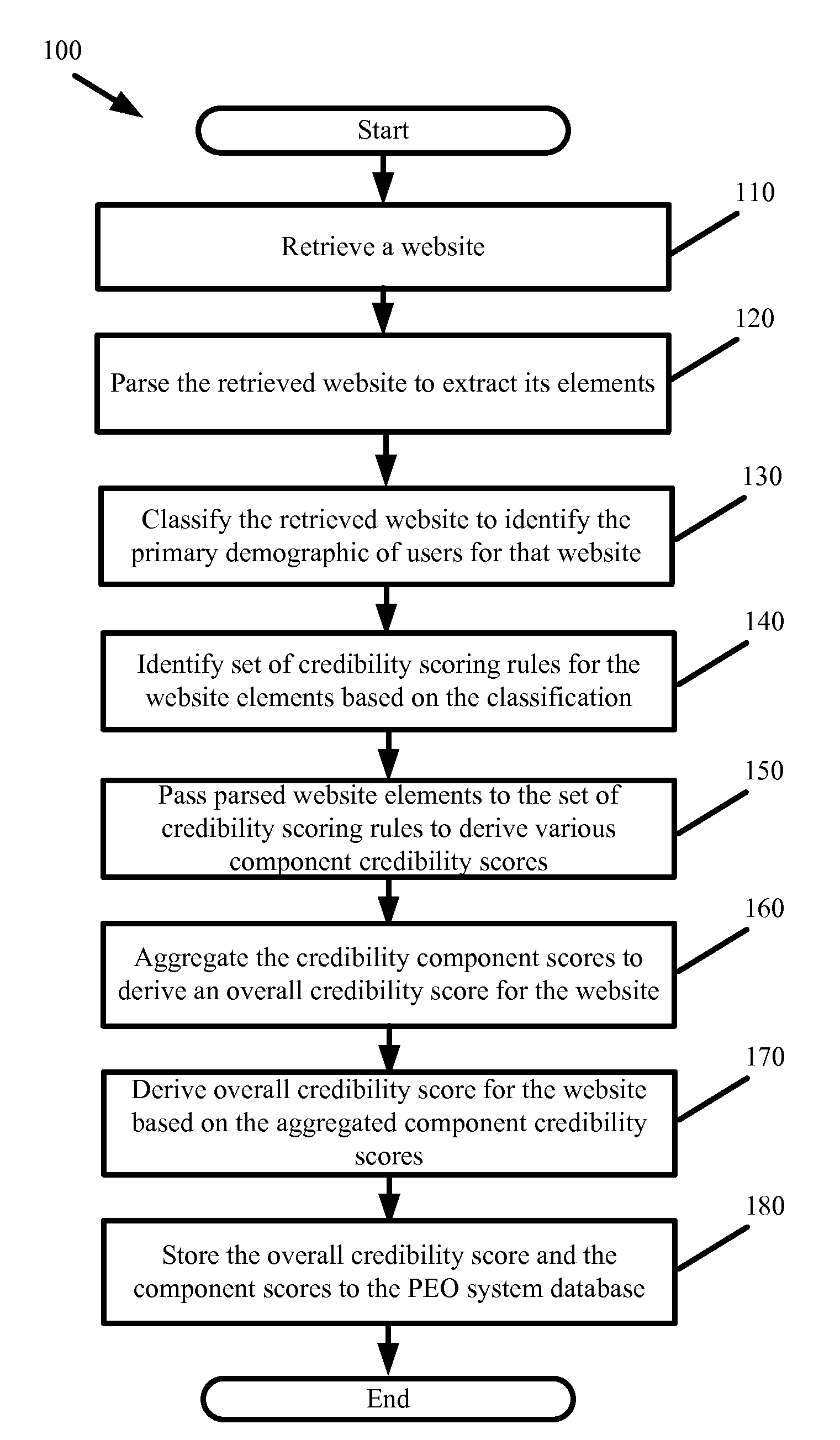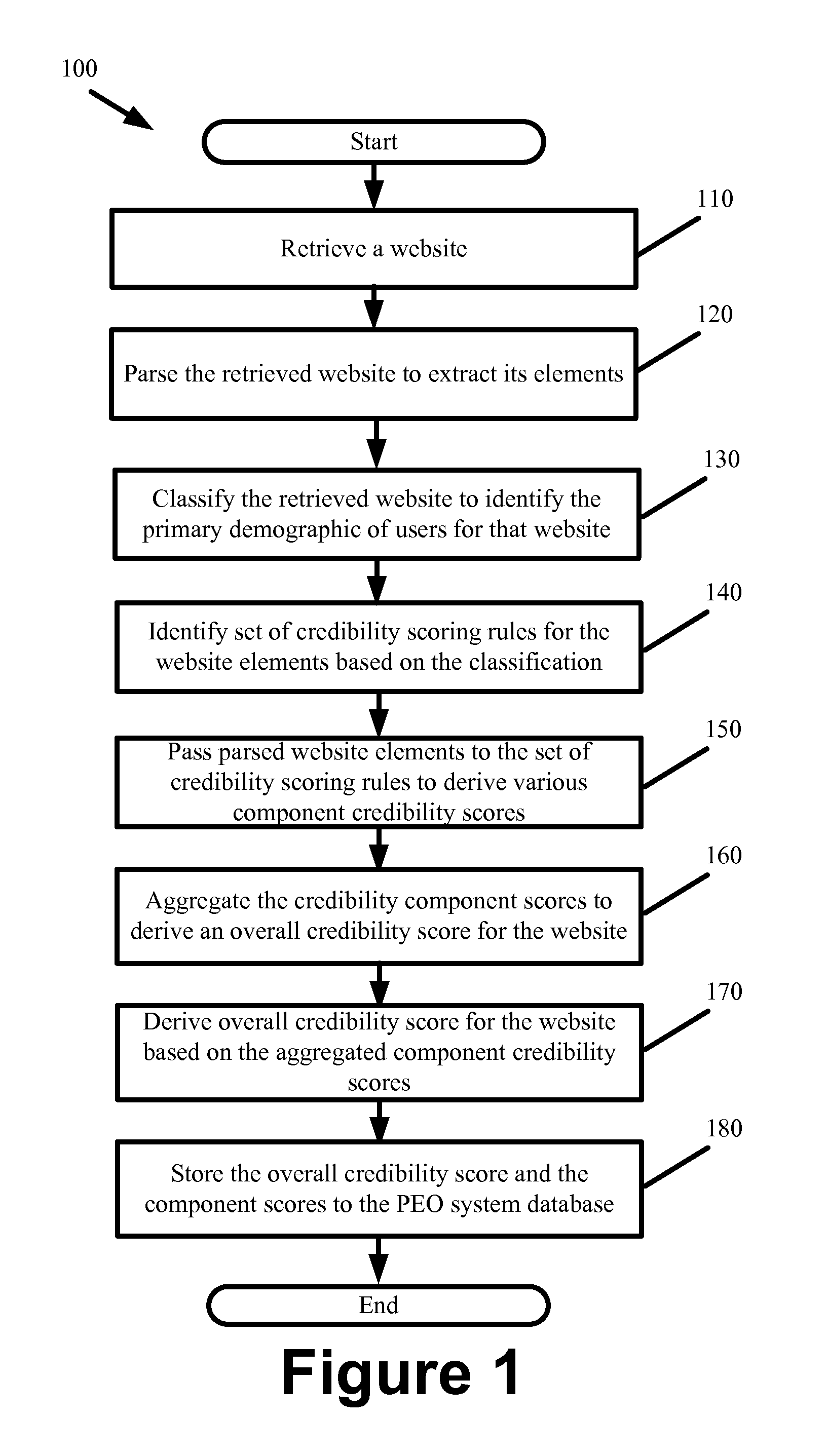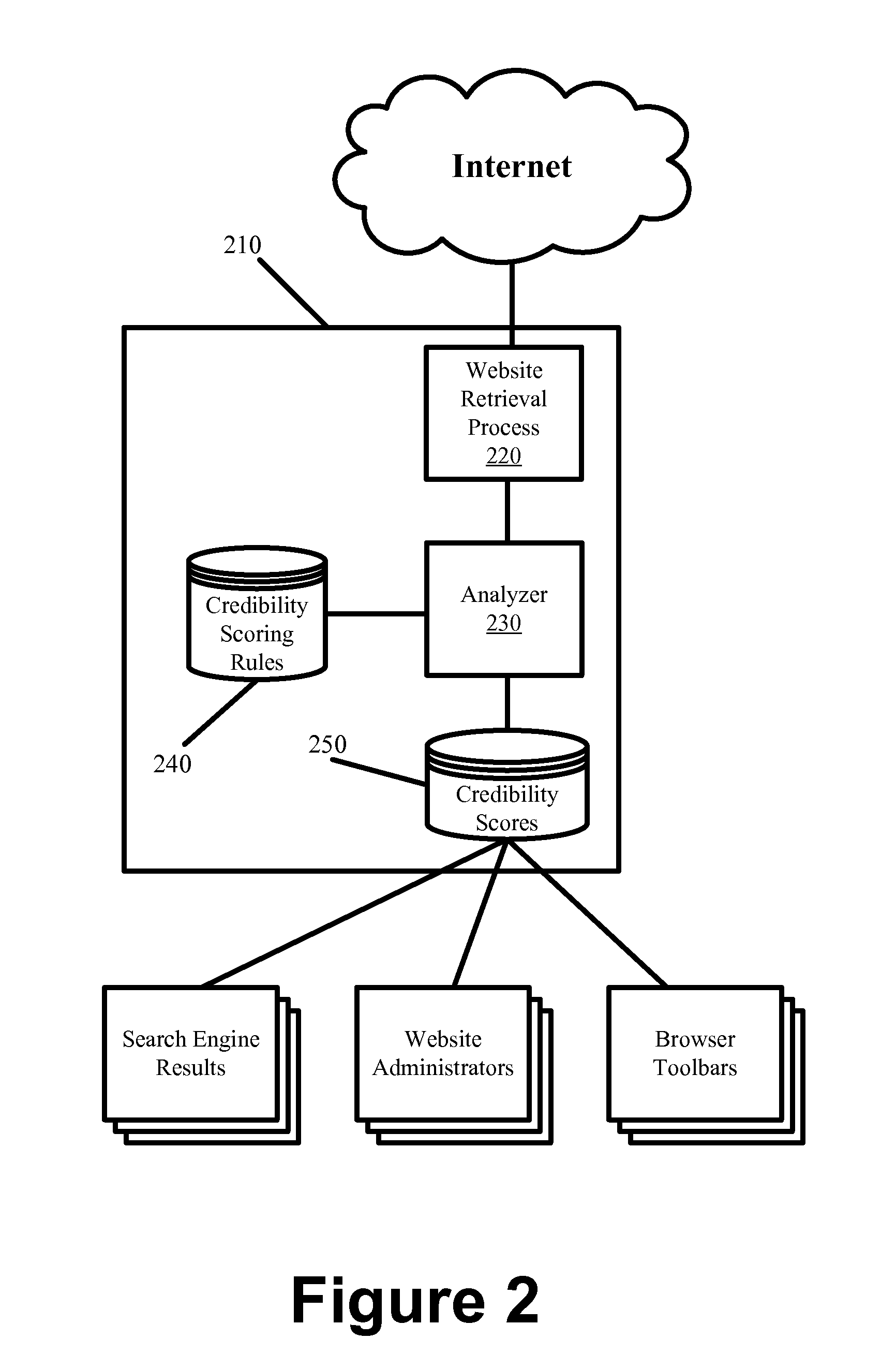People Engine Optimization
a technology of people engine and optimization, applied in the field of people engine optimization, can solve the problems of falsified or misrepresented content, content can also be intermixed with false information, and it is difficult for a user that is a content consumer to distinguish between credible and non-credible content, so as to improve website credibility, less likely to be subjected, and enjoyable web browsing experien
- Summary
- Abstract
- Description
- Claims
- Application Information
AI Technical Summary
Benefits of technology
Problems solved by technology
Method used
Image
Examples
Embodiment Construction
[0032]In the following detailed description, numerous details, examples, and embodiments of a People Engine Optimization (PEO) system and methods are set forth and described. As one skilled in the art would understand in light of the present description, the system and methods are not limited to the embodiments set forth, and the system and methods may be practiced without some of the specific details and examples discussed. Also, reference is made to accompanying figures, which illustrate specific embodiments in which the invention can be practiced. It is to be understood that other embodiments can be used and structural changes can be made without departing from the scope of the embodiments herein described.
[0033]I. Overview
[0034]Website credibility is difficult to quantify, because it is primarily predicated on subjective factors. Moreover, these subjective factors differ from one type of website to another based on the preferences of the people that primarily access the websites...
PUM
 Login to View More
Login to View More Abstract
Description
Claims
Application Information
 Login to View More
Login to View More - R&D
- Intellectual Property
- Life Sciences
- Materials
- Tech Scout
- Unparalleled Data Quality
- Higher Quality Content
- 60% Fewer Hallucinations
Browse by: Latest US Patents, China's latest patents, Technical Efficacy Thesaurus, Application Domain, Technology Topic, Popular Technical Reports.
© 2025 PatSnap. All rights reserved.Legal|Privacy policy|Modern Slavery Act Transparency Statement|Sitemap|About US| Contact US: help@patsnap.com



